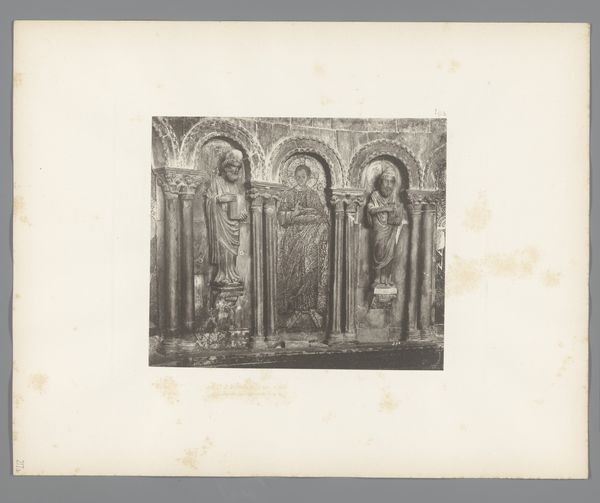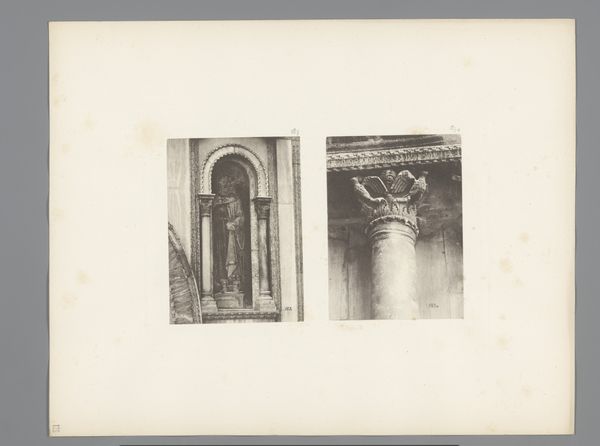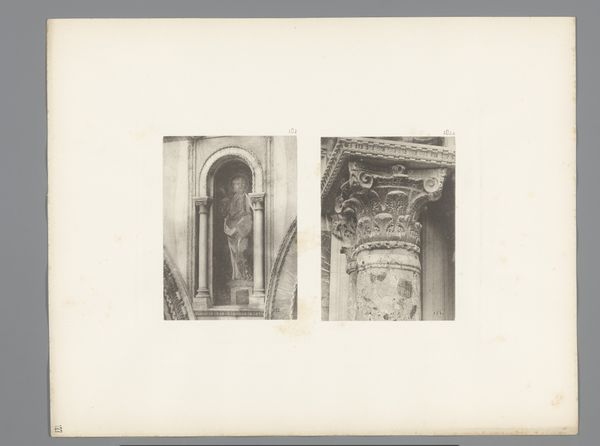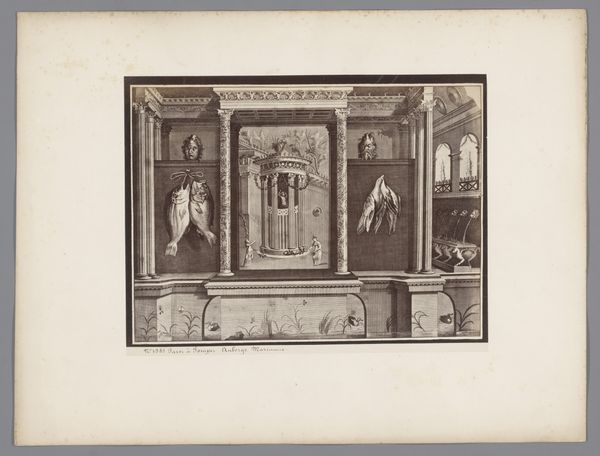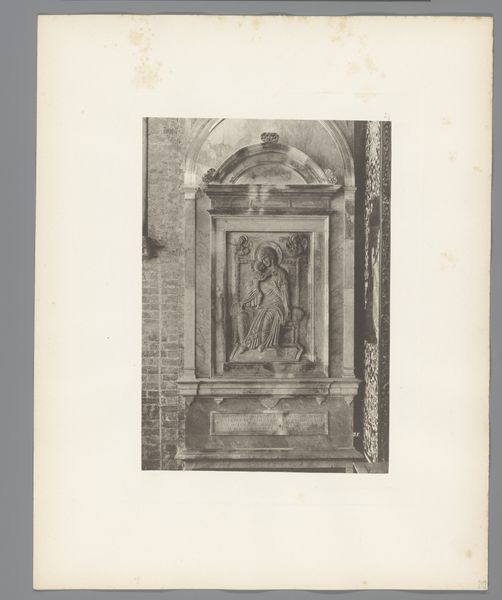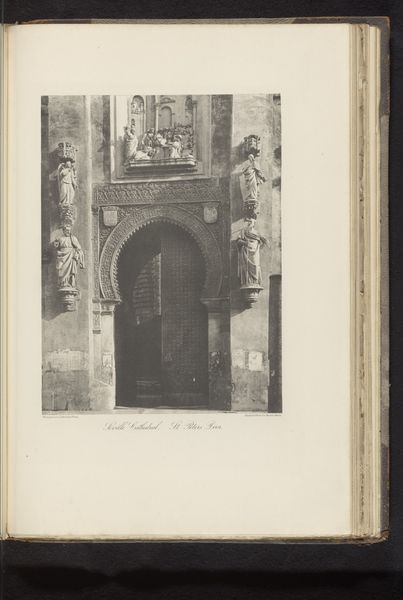
Twee mozaïeken en een sculptuur, vermoedelijk van apostelen, van de San Marco in Venetië before 1885
0:00
0:00
mosaic, print, photography, sculpture
#
mosaic
#
byzantine-art
# print
#
figuration
#
photography
#
ancient-mediterranean
#
sculpture
#
history-painting
Dimensions: height 313 mm, width 394 mm
Copyright: Rijks Museum: Open Domain
Editor: So, this is "Twee mozaïeken en een sculptuur, vermoedelijk van apostelen, van de San Marco in Venetië" - translated to "Two mosaics and a sculpture, presumably of apostles, from San Marco in Venice". It's a photograph of what looks like some byzantine art from before 1885, credited to Carl Heinrich Jacobi. The photograph itself is interesting, it almost makes these ancient works feel like contemporary pieces. What strikes you when you look at this image? Curator: The immediate impact for me lies in understanding how the church of San Marco in Venice functioned as a stage for political and religious power. These mosaics and sculpture weren't simply decorative; they were integral to the articulation of Venetian identity. The arrangement suggests a clear hierarchy, influencing how worshippers perceived their place in both the earthly and divine realms. Editor: A stage, that's interesting! The photo captures them as objects almost frozen in time. Was there anything specific about Venetian society that made this kind of display so effective? Curator: Venetian society, particularly during the medieval period, was deeply invested in spectacle and ceremony. San Marco was the Doge's church, and the artwork played a key role in projecting wealth and authority. The Byzantine style, with its opulent materials like gold leaf in the mosaics, deliberately evoked the grandeur of the Byzantine empire, associating Venice with its legacy. This wasn't just about religious devotion; it was calculated image-building. Does this revised context give you new perspectives on the photo? Editor: It does, it highlights the intent and effort in crafting a very particular image. Thinking of Venice wanting to associate itself with the grandeur of the Byzantine empire, is the act of photographing these works and showcasing them in a new way another act of shaping or changing its public role? Curator: Exactly! Photography allows the art to circulate beyond the physical confines of the church, influencing its meaning and accessibility. This photograph participates in the continuous reshaping of San Marco's image, isn’t it? Editor: Absolutely, seeing it as more than just an artifact, but as a part of a broader cultural and political narrative is a great new perspective. Thanks!
Comments
No comments
Be the first to comment and join the conversation on the ultimate creative platform.
